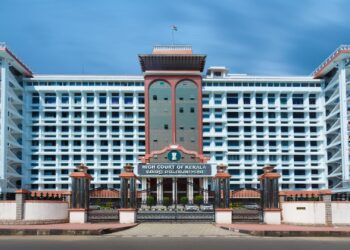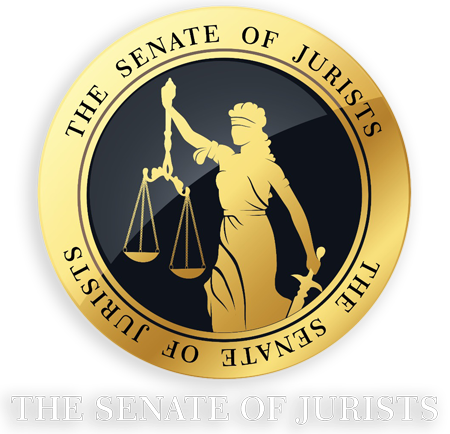On September 20, the Bombay High Court’s Justice AS Chandurkar struck down Rule 3 of the Information Technology (Intermediary Guidelines and Digital Media Ethics Code) Amendment Rules, 2023. This rule empowered the Central government to establish Fact-Check Units (FCUs) to regulate “fake news” related to its business. The Court found the rule to be unconstitutional, following a challenge led by stand-up comedian Kunal Kamra and others [[Kunal Kamra v. Union of India and Ors].
The controversial rule required intermediaries, including social media platforms, to prevent the dissemination of content deemed “patently false, untrue, or misleading” regarding the Central government’s business. The establishment of FCUs was intended to identify and control such information. However, Justice Chandurkar found the rule in violation of fundamental rights, siding with Justice GS Patel’s earlier stance in a split verdict from January 2023, which overrode Justice Neela Gokhale’s support for the amendment.
Here are the five main reasons why Justice Chandurkar declared the IT Rules Amendment unconstitutional:
Violation of Fundamental Rights
Justice Chandurkar held that Rule 3 violated the fundamental rights to equality, freedom of speech, and the right to carry on trade and profession under Articles 14, 19(1)(a), and 19(1)(g) of the Constitution. He aligned with Justice Patel’s view that freedom of speech does not include a “right to the truth” and that any restrictions on speech must meet the reasonableness criteria under Article 19(2).
Chandurkar criticized the rule for improperly classifying speech related to the government’s business without constitutional authority, infringing upon Article 19(1)(a). He found the rule to be ultra vires (beyond the scope) of the Information Technology Act, 2000.
Discrimination Against Digital Platforms
The rule treated digital platforms differently from print media, which Justice Chandurkar saw as discriminatory under Article 19(1)(g). Echoing Justice Patel’s earlier reasoning, he noted that similar scrutiny was not imposed on information in print media, despite both having the potential to impact public opinion. He questioned the rationale behind regulating only digital content while print media remained unaffected.
Justice Gokhale had argued that digital platforms’ wider reach justified stricter regulation. However, Justice Chandurkar disagreed, emphasizing that such arbitrary classifications violate the right to equality under the law.
Government Cannot Be a Judge in Its Own Cause
Justice Chandurkar strongly condemned the rule for allowing the Central government to be the final judge of what constitutes “fake news” about itself. He highlighted the conflict of interest inherent in allowing the government to regulate and decide what information about its own activities is false or misleading. This, he said, undermined impartiality and fairness, creating a system where the government could act as both prosecutor and judge.
He cited past Supreme Court rulings that invalidated similar conflicts of interest and noted that the FCUs, in essence, made the government the “arbiter in its own cause,” which is unconstitutional.
Vagueness and Overbreadth
Justice Chandurkar criticized the rule’s lack of clarity, particularly concerning the terms “fake,” “false,” and “misleading.” These terms were not well-defined, leaving too much discretion in the hands of the FCUs and opening the door to potential misuse. He argued that vague laws allow arbitrary enforcement, which could stifle free speech and create uncertainty for content creators and digital intermediaries.
Justice Gokhale had downplayed these concerns, suggesting intermediaries could seek clarification from authorities. However, Justice Chandurkar ruled that the rule’s inherent vagueness rendered it unconstitutional, as it allowed for censorship of lawful content without a clear basis.
Chilling Effect on Digital Intermediaries
The rule’s vague requirements placed an undue burden on digital intermediaries, forcing them to preemptively censor content to avoid penalties. Justice Chandurkar agreed with Justice Patel that this created a chilling effect, where platforms might remove lawful content out of fear of government action, thereby stifling free speech and expression.
Justice Gokhale had argued that intermediaries could seek guidance from authorities, but Chandurkar found this impractical. The lack of clear definitions and the heavy-handed approach risked creating an environment where lawful discourse was suppressed, hindering public debate and criticism of the government.
Conclusion
Justice Chandurkar’s ruling struck down Rule 3 of the IT Rules Amendment as unconstitutional, emphasizing that its fundamental flaws could not be remedied through interpretation or “reading down” the rule. He rejected the Central government’s argument that the rule could be adjusted to address concerns, concluding that it failed the proportionality test required to justify restrictions on fundamental rights.
This ruling is a victory for digital platforms and free speech advocates, as it prevents the Central government from arbitrarily regulating content under the guise of tackling “fake news” about its business.

















